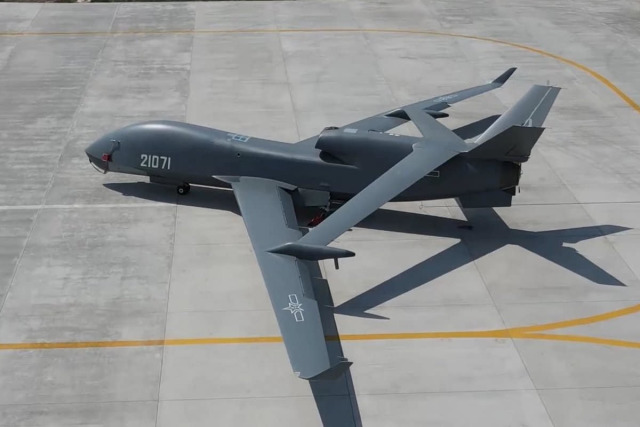The development of a high-altitude reconnaissance unmanned aerial vehicle (UAV) of long flight duration under the designation EA-03 specialists of the Chengdu Research Institute of Aviation Design of AVIC-1 Corporation began in 2000. Serial production is provided by Guizhou Aircrfat Co.,Ltd. Currently, this UAV of China has been assigned the open designation WZ-7. The internal designation in the People's Liberation Army Air Force (PLA) is BZK-007.
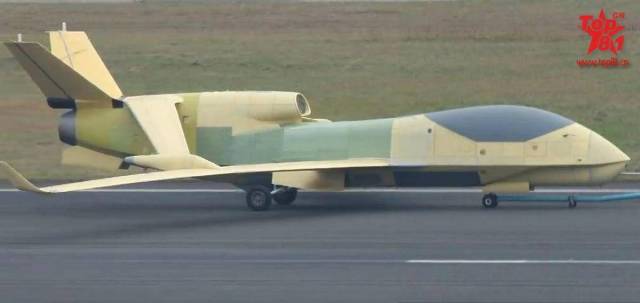
The first prototype of the WZ-7. Probably with a WP-13 engine.It is known that the UAV data is collected at the Cloud Horse factory in Anshun (Guizhou Province).
Control flights are performed in the area of the Huanggocun Civil Airport (HuangGoCun; IATA:AVA, ICAO: ZUAS). The main test program is carried out at the Wenjiang Airport (WenJiang; IATA: NWJ) in Chengdu (Sichuan Province).
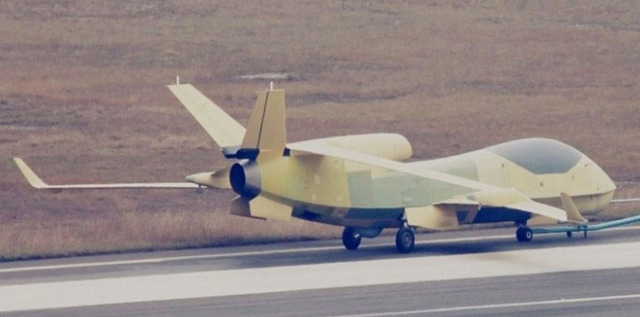
Prototype WZ-7 at Huanggocun AirportAs a basis for the development of the WZ-7, information was used about the American RQ-4 Global Hawk, which in China is considered a model of a strategic intelligence UAV.
Taking into account the serious lag in structural materials, an original scheme with a double tail was chosen, which eventually provided several positive properties of the device, namely: good controllability over the entire range of speeds and heights, stability when performing a U-turn, the impossibility of going into a tailspin even with loss of speed.
For the first time, the layout of the Chinese UAV in question was presented to attention in 2006. After 5 years (by 2011), a prototype was made for ground testing. The model performed its first test flight in 2013.
Due to the use of carbon fiber with a drone length of 14 m, a wingspan of 23.8 m, a height of 3.9 m, Chinese designers managed to ensure a minimum take-off weight of 6800 kg, the normal take-off weight is 7500 kg. When fully fueled and the payload is installed (equipment weighing up to 650 kg), the maximum take-off weight of the drone can reach 9000 kg.
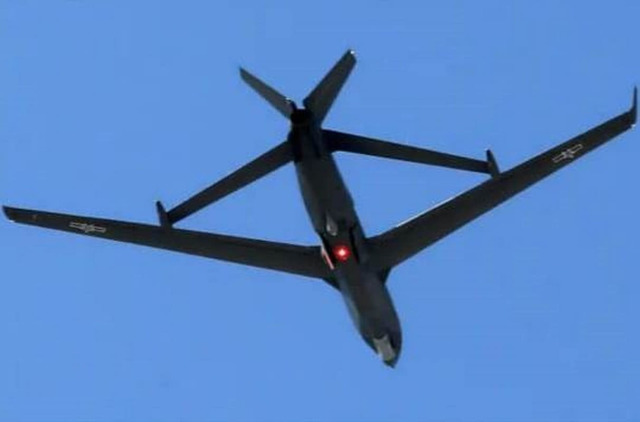
China's WZ-7 UAV in flightThanks to the Ukrainian-made AI-222-25 turbofan engine (the Chinese version has the designation WS-11 "Minshan"), this device is capable of flying at speeds up to 700 (750) km/ h for a duration of 10 hours.
The practical ceiling is 18,000 (20,000) m. According to the calculations of Chinese engineers, when the speed decreases to 400-450 km / h, the total duration of the flight can reach 15 hours, of which 12 hours is the time the UAV is in the area of the task.
In the future, it is possible to replace the AI-222-25 engine with the Chinese WS-17, which is being developed as part of the national program to replace supplies from Ukraine, since the Chinese side is forced to periodically return AI-222-25 engines to Motor Sich due to the detection of substandard assembly.
Thanks to the original design, carbon fiber and a special coating that absorbs the radiation of the air defense radar, the effective dispersion area of the WZ-7 does not exceed 1 sq.m.
According to available data, the PLA Air Force began experimental military operation of the WZ-7 in 2018 and deployed the first group of UAVs at the airfield of the Zhoushan Naval Base of the Eastern Fleet of the PLA Navy. Probably, the first three squadrons of WZ-7 were deployed as part of the Eastern (2 esc) and Southern (1 esc) fleets of the PLA Navy. The characteristic color of the UAV indicates that it belongs to naval aviation.
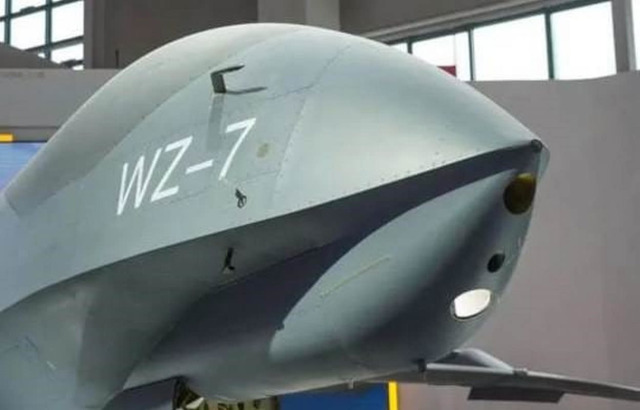
The bow of the WZ-7The main purpose is to conduct reconnaissance, surveillance and collect information about the activities of the US Navy while practicing tactical techniques to repel a missile attack on ship groups.
Data collection is provided by a radar station with a synthesized aperture (provides detection of objects with a size of 0.5 m or more) and a thermal imaging station (mounted in the bow) operating in the ranges from 8 to 12 and from 3 to 5 nM. Simultaneously with the reconnaissance, the drone allows you to deploy a backup communication channel for ships and units, ensuring the transmission of high-quality video and photo materials.
In addition, the designers are separately working on a modification of the Chinese UAV in question, equipped with a GPS jamming system based on the complete blocking of the global positioning system within a radius of 60 km.
WZ-7 tail number 21074 on exercises in November 2021According to the PRC media, the first exercises with the practical application of the WZ-7 took place in November 2021.
Based on the materials of Chinese specialized military-technical publications
